Book Printing: Comb Binding vs Spiral Binding
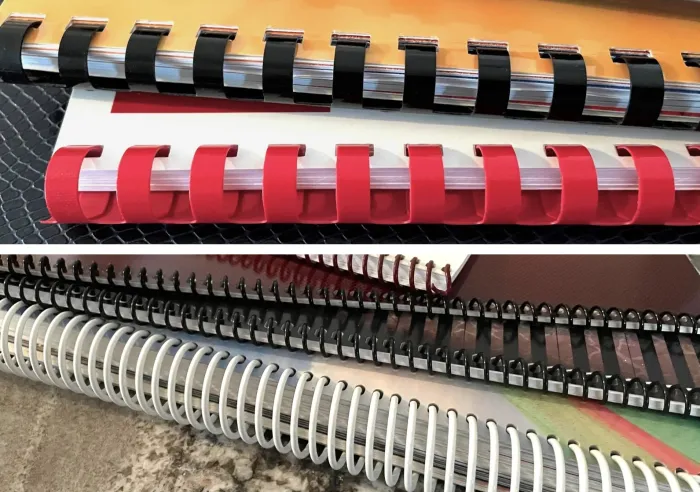
estimated reading time: 4 minutes
Comb Binding and Spiral Binding are two of the most popular "punch and bind" methods for binding softcover books.
As such, both methods are used for a variety of book projects. These include training and instruction manuals, workbooks and study guides, assembly and maintenance guides, repair manuals, product and price lists, recipe books, bound sheet music, presentation books, directories, and travel guides.
The comb and spiral binding methods are also frequently used
for creating multi-page wall calendars. Both of these methods allow the pages
of the calendar to hang perfectly flat against the wall.
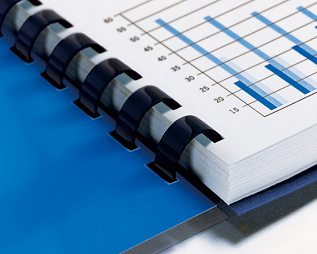
Below is a quick overview of comb binding and spiral binding
followed by a comparison of their features.
What is Comb Binding?
Comb Binding is aptly named because it uses a plastic
"comb-like" spine element. The spine has a series of tines like a
hair comb. But, instead of the tines being straight, they are curved into a circular shape. These pre-formed tines contain a great deal of tension, which keeps
them tightly closed and helps to maintain their circular shape.
To bind a book, the printed pages and cover are punched with
a series of rectangular slots along one edge. The curved tines of the binding
element are then spread wide open and inserted through the slots punched in the
book's pages and cover. The tension in the tines is then released and the tines
spring back to their original circular shape. This secures the book together but
still allows the pages and cover to turn freely.
What is Spiral Binding?
Spiral Binding makes use of a continuous spring-like coil
to join a book together. The coil is wound through a series of holes punched
along one edge of the book's pages and cover. Once the coil has been fully inserted,
each end is crimped to secure it in place.
Also known as coil binding, the spiral binding method joins
a book securely together while allowing the pages and cover to rotate easily around
its spring-like spine.
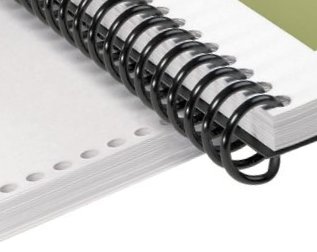
Comb Binding vs Spiral Binding - A Comparison of Features
Appearance - the curved times on a comb binding spine are relatively wide compared to the loops of a spiral binding coil. When a comb bound book is open, these wide tines keep opposing pages aligned with each other. On the other hand, spiral binding uses a helical coil, so opposing pages will exhibit a slight shift in alignment when the book is open.
Spine size - the spines for comb binding and spiral binding are comparable in size. Both are available in diameters ranging from 1/4" to 2". The 2" diameter spines can bind a stack of pages up to 1-3/4" thick. How many pages this actually equates to will depend on the thickness (caliper) of each sheet.
Punch style - comb binding and spiral binding both require a series of holes punched along the spinal edge of the cover and pages. The holes for comb binding are rectangular slots, whereas the holes for spiral binding are either round or oval. Despite the different hole shapes, both methods offer a reliable approach for securing a book's pages.
Durability - the spines used for the comb and spiral binding styles are both made of PVC plastic. PVC is strong, abrasion-resistant, and won't discolor with age. The spines used for comb binding are somewhat rigid whereas the spines used for spiral binding are very flexible.
Colors - the plastic spines for both of these binding methods are available in a variety of colors, so there will be a color available to complement the cover of virtually every book. That said, the most widely used spine colors are black, white, and blue.
Ability to Lie Flat - a comb bound book can open 180 degrees, which allows it to lie perfectly flat on a desk or table when in the open position. A spiral bound book can open a full 360 degrees, which not only lets it lie flat in the open position but also allows it to fold back upon itself. This feature allows the book to become more compact and easier to handle.
Page Updates - the curved tines on a comb bound spine can be spread open, making it possible to remove and add pages. However, it should be noted that without having a comb binding machine to spread open the tines, it does take some effort to re-open the tines by hand. On a spiral bound book, pages can be changed by carefully bending back the crimp on one end of the coil and then unwinding it. That said, the crimp can only be re-bent a few times before a replacement coil might be needed. So if your project requires frequent updates, a ringed binder might be the better alternative.
Cost and Lead time - there is minimal difference between the cost and lead time of comb binding and the cost and lead time of spiral binding. Both are equally affordable and readily available.
Color Vision specializes in Book Printing
Book printing is one of Color Vision's specialties, so
whether your project calls for comb binding, spiral binding, or any other softcover
binding style, we can definitely help! Just give us a call at 800-543-6299 to
discuss your project.
Or, if you prefer to communicate by email, use our Quote
Request form to send us your project's specifications and we will be happy to email
a quote to you.
We hope to hear from you soon and look forward to assisting
with your book project!
Related Articles:
10 Frequently Asked Questions about Comb Binding
10 Frequently Asked Questions about Spiral Binding
Related Articles
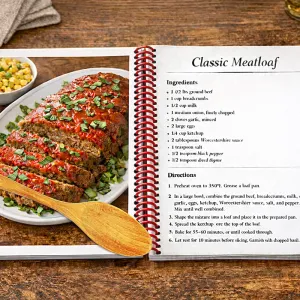
Which Book Projects Benefit From Being Spiral Bound?
Read This Article
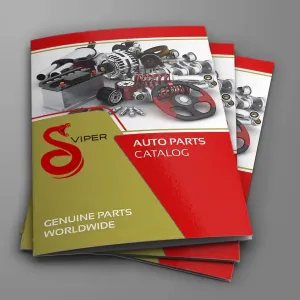
Booklet Catalogs: Why is this Catalog Format so Popular?
Read This Article
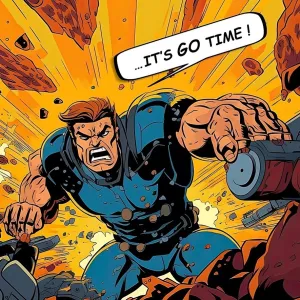
Creating a Comic Book? Here’s some Advice from a Printer
Read This Article

Perfect Binding vs PUR Binding: What is the Difference?
Read This Article